Coconut palms are astoundingly useful to tropical or subtropical homesteaders. They provide everything from wood to medicine to nutritious, high-calorie food.
They’re hardy, need minimal to no care, and produce (on average) anywhere from 50-200 coconuts per tree, per year.
The icing on the cake? You can process the fruit to make oil, coconut milk, or other products without any special equipment whatsoever. Read on to learn more about coconut palms and how to harvest coconut on your tropical homestead.
Where Coconut Palms Grow
You’ll find coconut palms growing in warm, humid regions around the world. They’re possibly the most abundant tree along coastlines worldwide between 26 degrees latitude north and south in the tropics and parts of the subtropics.
Palms are naturalized in southern Florida, and can also be grown in the southern areas of Texas and California. They thrive best in USDA Zones 9a to 11.
Coconut palms are very willing to grow in areas away from the ocean so long as their climate requirements are met. They are resistant to floods, strong winds, and storms.
How Coconut Fruits Mature
Coconut palms flower in bunches called inflorescences by the botany-inclined. The flowers are small, white-yellow, and often surrounded by a swarm of pollinating bees. The palms flower continuously throughout the year.
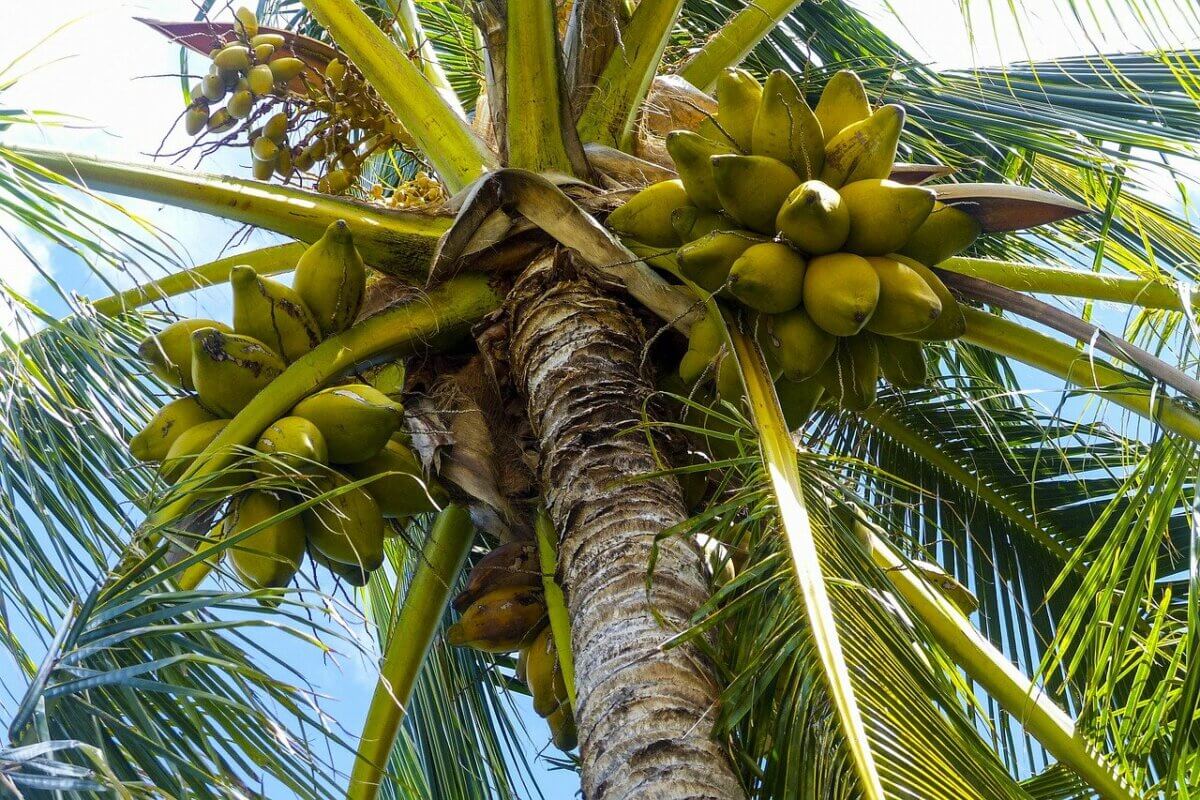
Fruits — that is, coconuts — form from the swollen ovary of the flowers and can be green, orange, or yellow. They start out not much bigger than a grape, but within a few months, swell to a respectable size at which point you can harvest them for coconut water.
Related Post: Tropical Homesteading: Growing Bananas
Fruits left on the tree mature in about nine months; at the end of which they’ll have turned hard and brown, ready to process for the substantial layer of fatty white meat inside the seed.
How to Harvest Coconut by Knocking Them out of the Tree
No matter what stage you harvest, your first task is to get those fruits down from the treetops. People around the world have settled on various ways to achieve this, so you have a few options.
Use a Long Stick or Bamboo Pole
Scavenge or cut a branch from a nearby tree that will reach the coconuts you’ve got your eyes on. If you’re harvesting along the coastline, there may even be some nearby driftwood that fits the bill. Simply take the pole and give the coconuts a good whack. It’ll take a few hits, but this is a simple and effective way to get them down to your level. Just mind your head.
Prop a Ladder
If you’re dealing with fairly young palms, a ladder may reach the fruits. Prop one against the palm, have someone hold the base to support you and climb on up. Bring a knife to make quick work of the coconuts.
Climb the Tree
This one depends a great deal on your athletic ability and the shape of the palm in question (you stand a much better chance on trees with curved trunks). If you do manage to climb one, all it takes is one slash with a machete or bushcraft knife and the whole bunch comes tumbling down!
Editor’s Note: Do not attempt to climb a coconut tree unless you have prior experience doing so. Do not try this at home if you aren’t confident or feel safe doing so.
Harvesting Fallen Coconuts
Coconuts fall out of trees at all stages of maturity, and there’s nothing wrong with picking them off the ground. Do a quick inspection first. If you’re picking up immature coconuts for their water, smell them. If they smell fermented, toss them away. Likewise, look for cracks in the skin of the coconut. If it’s cracked from the fall, don’t waste your time. Chances are the water has already drained out.
When harvesting mature fallen coconuts (those with tough brown shells), again perform a sniff test and toss any with a suspicious smell. Disregard those with roots or shoots.
Related Post: How To Grow Bamboo
Keep in mind, too, that there may be roots growing out of the seed enclosed within the fruit itself. Unfortunately, you’ll need to discard these too, but you won’t know whether this is the case until you open them.
Now you have a grip on the practicalities of how to collect coconuts, let’s talk about selecting the right coconuts and processing them.
How to Harvest Coconut for Water
When you’re harvesting your coconut for water, there are a few things to remember including how to properly select ripe coconuts and how to process them for their water.
Selection
Coconuts are predominantly harvested for water when they’re still young and green or yellow or orange (colors signify variety rather than age). You can harvest mature brown coconuts for water if you like, but that means a much longer wait and more effort to open them.
Taste preferences vary from person to person, but my ideal drinking coconut is somewhere around 13 centimeters or 5 inches across. At this size, they’re usually quite spherical, whereas much younger or older coconuts are more oval-shaped.
Coconuts at this stage have sweet, refreshing water that’s just right for most people, and exactly the kind of taste you get from bottled coconut water sold in supermarkets. In contrast, the water inside smaller, younger coconuts is bland and tasteless.
Coconuts on the mature side have tangy, slightly fermented water. Drinking it won’t make you sick, but most people find them a little too strong for their liking. Experiment with coconuts of different sizes and you’ll soon get an idea of what you like best.
Processing
The water you’re after is held inside the seed of the coconut fruit. To get to it, slice the fruit open with a machete or kitchen knife.
I find the most efficient way to achieve this is to cut diagonal slices away from the top or bottom of the coconut as shown in the image below. Once you reach the hard seed, either chip a hole with the same diagonal cut or stick the knife directly into the seed and hit the hilt with your palm. Widen the hole to your liking, and you’ve got yourself a delicious, refreshing drink of coconut water.
As with most things, you more proficient with a bit of practice so don’t despair if your first few coconuts seem like a lot of effort. Soon enough you’ll be slicing through them in ten seconds flat.
Related Post: 15 Weird and Wonderful Tropical Fruit Trees for Tropical Homesteads
Tip: Before you throw your empty coconut away, feel inside the seed to see if it has a soft layer of meat. It’s not the same firm texture as the meat of mature coconuts, but it’s still tasty. If your coconut is old enough to have a layer worth eating, split it with a machete and dig in!
How to Harvest Coconut for Meat, Milk, Cream and Oil
As far as harvesting coconut for meat, milk, cream, and oil, there are a few other considerations.
Selection
Whether you want to eat the meat itself or process it for making coconut milk, cream, oil, or other products, you’ll want mature brown coconuts. These have a much thicker and firmer layer of white meat than younger ones.
As mentioned, leave any coconuts with visible root or stem growth behind. If you’re harvesting coconuts still in the tree this shouldn’t be a problem.
Note: If you’re planning to make coconut milk or oil, you’ll generally want at least three coconuts to get a reasonable amount of finished product.
Processing
There are as many ways to get to coconut meat as there are cultures that harvest it, though none of them are without effort. First, you need to remove the hard, outer skin and fiber of the fruit from the seed inside. Some people cut into the coconut with a machete and bring it down on a hard surface like concrete until they make a deep enough cut to start peeling away the skin.
Related Post: 7 Indoor Trees To Add Some Greenery To Your Home
Another option is to find a metal pole or spiky tree branch and hit the top of the coconut against it until you can begin peeling away the skin in strips. It’ll take some work, but once you’ve separated the seed you can discard the rest.
Tip: Ever heard of coconut coir? Coir is a name for the fiber covering the seed of the coconut. If you grow seedlings, don’t throw it away. You can use it to make a fantastic potting mix.
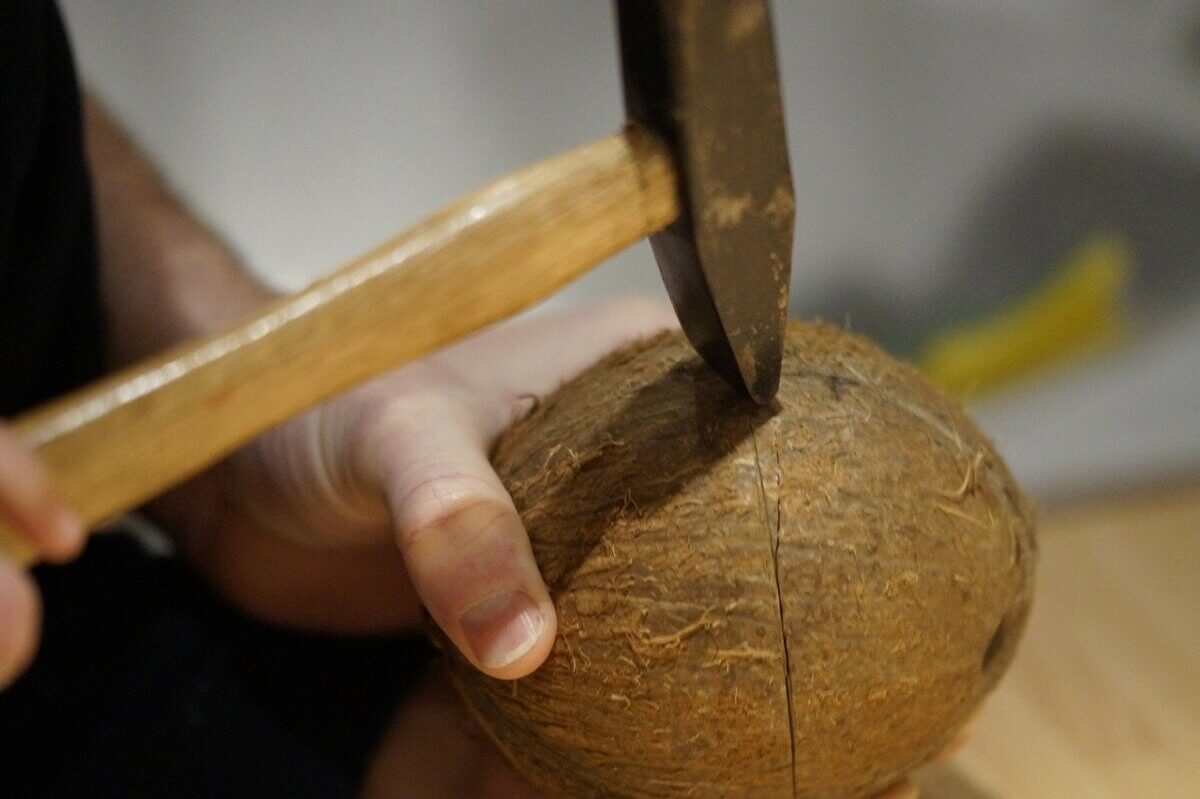
Now that you’ve separated the seed, the meat awaits inside. You can split the seed by using a hammer to tap a circle around it until the two halves fall away. This is even easier if you hold the seed over a hot flame for a minute or two beforehand. I like this option as it lets you chip away parts of the seed casing until you’re left with a relatively intact ball of meat ready to use.
Alternatively, you can split the seed into pieces with anything from a hammer to a sharp stone, and painstakingly tease chunks of meat out of the inside. I don’t recommend this method, though. It requires less finesse, but it’s much more tedious to separate the meat from inside the shell than to just chip away parts until the meat is exposed, as above.
That’s it! You’ve successfully taken a whole coconut and gotten to the nutritious, delicious meat inside. You can now proceed to use that meat in an astounding number of homestead projects from desserts to skincare to cleaning products — if you’ve resisted the temptation to gobble it up fresh, that is.


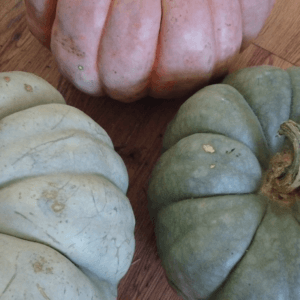


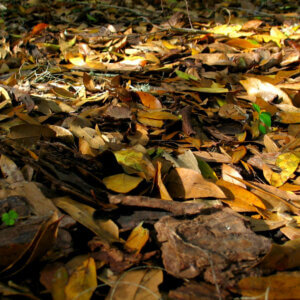
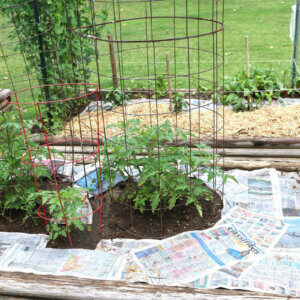

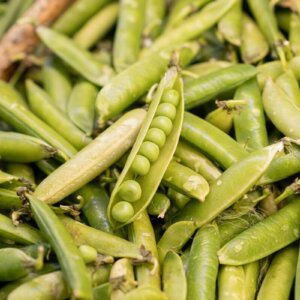






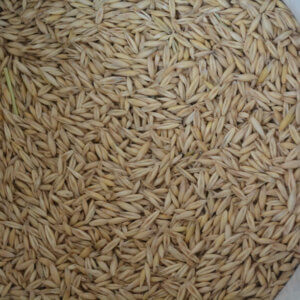



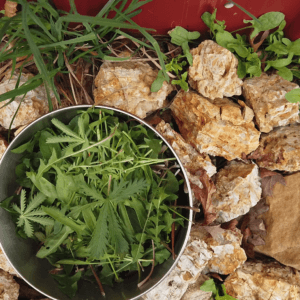



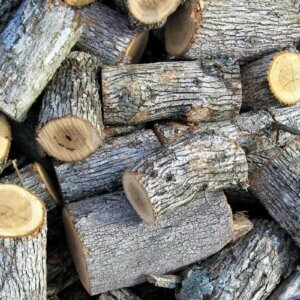

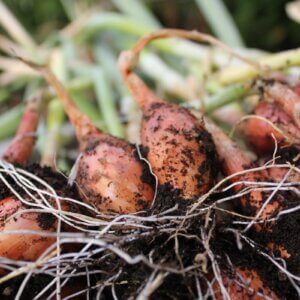






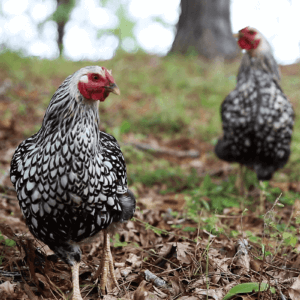
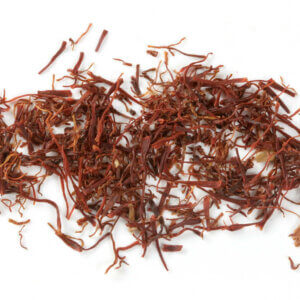


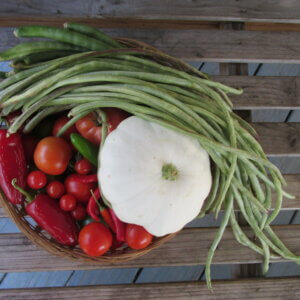
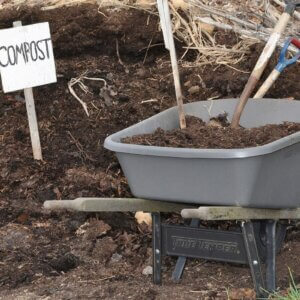
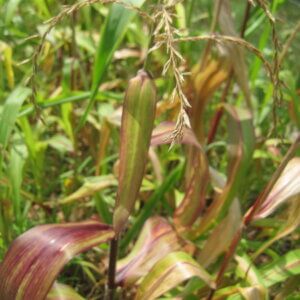

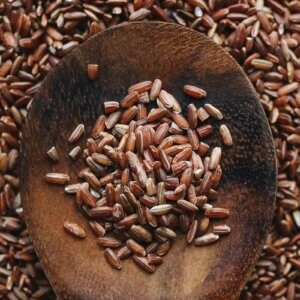
Leave a Reply